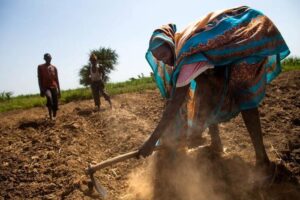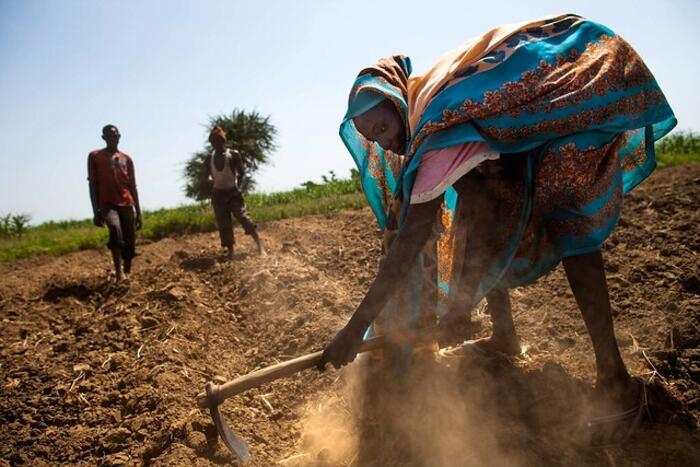From Dan Smith’s Blog, this article introduces Sipri’s new report Five questions on ecological security
 Beyond the climate crisis, other related aspects of ecological disruption are bad news for peace. Too little is known about the links between environmental change and its impact on societies, politics and peace, in part because there are many gaps in scientific knowledge about the dimensions and trajectory of disruption. As a result, not only can we not provide all the answers we need in order to know what is unfolding and how to respond, we also don’t know all or even most of the questions to ask. That said, we know enough to know there’s a problem, enough to understand the urgency of knowing more.
Beyond the climate crisis, other related aspects of ecological disruption are bad news for peace. Too little is known about the links between environmental change and its impact on societies, politics and peace, in part because there are many gaps in scientific knowledge about the dimensions and trajectory of disruption. As a result, not only can we not provide all the answers we need in order to know what is unfolding and how to respond, we also don’t know all or even most of the questions to ask. That said, we know enough to know there’s a problem, enough to understand the urgency of knowing more.
SIPRI has just published a report, Five questions on ecological security, which I co-authored with Rod Schoonover. It outlines the issues and begins the task of figuring out what to do about them. This post is a much-shortened version of the policy parts of the full report; my next post will summarise some of the underlying hard science knowledge and gaps. Or, to get it all in one go, turn to the full report.
Ecological disruption
The starting point for this discussion is that today’s and tomorrow’s challenges for peace and security are unprecedented because one of their main drivers is an unfolding ecological crisis. If governments and international organisations fail to recognise that, then whatever they do in the security sphere, for good or bad, will be missing part of the point.
The impact of ecological disruption is fundamental. Social life is built on natural foundations. Just as it is impossible to imagine an economy without a society in which it functions, it is impossible to imagine a society without the biosphere to feed it, land on which to live, the hydrosphere and the atmosphere for water and air for life, and the climate sphere to regulate food production. All these spheres – taken together, the ecosphere– now face pressure as a result of human activities. As I have pointed out in earlier blog posts, the human impact on nature, which increased steadily since the start of the industrial revolution just over 200 years ago, accelerated significantly in the last 70.
The concept of ecological disruption covers climate change, loss of both biomass and biodiversity, pollution of all kinds, and the amplification of organisms that thrive in the changing ecosphere and whose emergence is unwelcome for humans. Ecological security can then be seen as an approach in policy and action aimed at mitigating the human vulnerability that does and will result both directly and indirectly from this disruption.
Five questions
The SIPRI report focuses on five sets of problems and asks a series of questions about each. The five do not add up to a comprehensive list of problems presented by ecological disruption. Left to one side are some that are already being addressed. There is, for example, a rich discussion under way about the effects of overloaded and depleted soils, toxified and acidified oceans, and stressed freshwater systems, as well as the impact of each on food security. The knock-on consequences of food insecurity are likewise receiving increasing attention, as is the impact of climate change on prospects of peace and conflict, not least due to SIPRI’s own work.
Important as all this work has been and remains, the bad news is that there are other nightmares to explore. The focus here, in an attempt to initiate a discussion that should eventually be on at least a similar scale to the climate security discussion, is on the biosphere.
Five questions, then:
- Amplification of antimicrobial resistance (pathogens that are increasingly drug-resistant),
- The physiological consequences of pollution,
- The loss of nature’s contribution to people’s well-being,
- Local and regional ecological tipping points, and
- Detrimental organisms and processes that thrive in the rapidly changing planet.
Each question has an immediate human health dimension because one key feature of ecological disruption is that there more encounters between humans and unfamiliar pathogens, pests and microbial entities. The economic impact of the Covid-19 pandemic (characterized by the World Bank as ‘the largest global economic crisis in more than a century’, leading to ‘a dramatic increase in inequality within and across countries’) makes it reasonable to surmise that, because of the health dimension, all five questions also have an economic dimension. In addition, partly as a consequence of economic disturbance and partly as a direct effect, it is likely that there are also implications for social behaviour. It is there that questions about peace and security begin.
In my next post, as indicated, I will go into the five questions a little. Here, some thoughts on the policy implications.
To narrow the range of uncertainty
One thing the report emphasises is that the evidence about these five areas is incomplete. We do not know everything about what is happening, or what causes it, or where it is heading. For somebody who believes in evidence-based policy, that is an interesting challenge. What we have, instead, is uncertainty-based policy.
Overall, a three-sided process of exploration is required. First, all five questions reveal gaps and uncertainties in basic scientific knowledge that need to be filled. Second, as the natural scientific base begins to be a little more established, it will be possible to start addressing knowledge needs about the social and economic consequences of each of these challenges. Third, as an understanding of social consequences—and thus of the degree of risk entailed— takes shape, policy responses need to be formulated, funded and implemented.
However, it is essential to understand that these steps are not sequential.
As relevant to security as it is to environmental policy, the precautionary principle holds that decision makers should not wait until scientific uncertainty is eliminated before acting. Consider: once a risk is identified, is it really a good idea to wait until proof consolidates in the shape of disaster before attempting to prevent, mitigate, adapt and/or limit the damage?
But the precautionary principle equally rules out a policy approach that acts blindly. What is needed is policy that learns as it goes along, progressively narrowing the range of uncertainty, steadily acting with more confidence that actions will have the desired effect. Accordingly, Five urgent questions ends by emphasising the need for a major research effort.
Forward leaning research
Obviously, ecological disruption and its impact need to be understood better. Equally obviously, we have to act quickly. Ecological disruption is moving fast, its consequences have appeared in our rear-view mirror and we risk being soon overtaken.
It’s worth recalling that when researchers first began to make the link between climate change and insecurity, there was considerable pushback in the scholarly community. Some scholars looked for proof of the link, found none and thus concluded that there is none. To find proof, they had to look to the past: large-n studies of the previous 60 years showed no climate signal, so a flawed conclusion was drawn, based on the false premise that the future will copy the past.
The search for proof is a distraction. For proof one looks back but this discussion is about looking ahead in a changing world. That means we should prioritise, not the fruitless hunt for proof, but the urgent assessment of risk.
Each of the five areas covered in the SIPRI report encompasses multiple interlinked sub-questions. Because the ecosphere as a whole is a network of linked sub-spheres –and thus what happens in the climate affects the air, the land, organisms and both fresh- and seawater – the questions in each area are linked with questions in other areas. The emphasis on interconnectedness means that, as well as thinking more clearly and systematically about risk, we need to think about interaction between the different spheres and sub-spheres. Those interactions could include sudden, disruptive shifts – discontinuities that mean we need to think about non-linear effects.
Thus if our first conclusion is that we need to study the problems more, looking carefully into each component, using different research disciplines and methodologies appropriate to each, this must be done in such a way that the different research efforts constantly build on each other.
An interdisciplinary open-mindedness is required to take forward this research. That kind of research is most likely to happen if its institutional settings are themselves experienced in communication between the disciplines.
But returning to the precautionary principle, it makes no sense to focus first on hard sciences alone. The third conclusion is, therefore, that the hard science research must be accompanied from the outset by social and political science research. And the fourth conclusion is that this research effort as a whole must be persistently oriented towards the policy world, which in turn must support the research and be open to the assessment and discussion of its findings.
How this should be done – what the best institutional settings are for research and policy development – is the next point on the agenda of this discussion. For now, the important thing is simply to establish that there is an agenda, and that it is urgent to start work on it.



